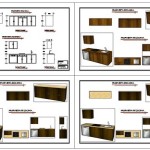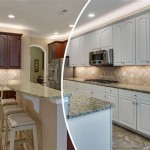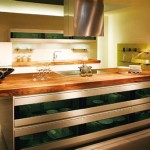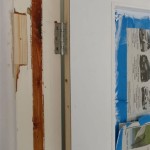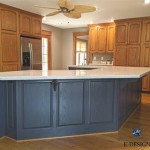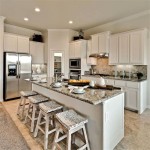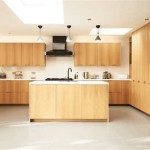Essential Aspects of Sample Design of Kitchen Cabinet
Designing a kitchen cabinet is a crucial step in creating a functional and stylish kitchen. It sets the tone for the overall aesthetic and provides ample storage space. To ensure a successful design, it is essential to consider several key aspects.
Cabinet Style
The style of your kitchen cabinet should complement the overall design of your kitchen. From traditional to modern, there are numerous styles to choose from, each with its unique characteristics. Shaker cabinets, for example, feature simple, clean lines and are a popular choice in modern kitchens, while raised panel cabinets have a more classic look and can elevate traditional kitchens.
Cabinet Layout
The layout of your kitchen cabinet plays a significant role in maximizing storage space and functionality. A well-planned layout ensures efficient workflow and easy access to essential items. Consider the placement of base cabinets, wall cabinets, and drawers in relation to the sink, stovetop, and refrigerator to create an ergonomic design.
Cabinet Materials
The material you choose for your kitchen cabinet will impact its durability, style, and cost. Solid wood cabinets are the most durable and visually appealing but also the most expensive. Laminate cabinets offer a wide range of colors and finishes and are more affordable, but they may not be as durable as solid wood. MDF (Medium-Density Fiberboard) cabinets are another budget-friendly option that provides a smooth, paintable surface.
Hardware
Hardware, such as knobs, pulls, and hinges, add the finishing touch to your kitchen cabinet. Choose hardware that complements the cabinet style and material. Consider the style, color, and finish to create a cohesive aesthetic. Brushed nickel hardware is a classic choice that adds a touch of sophistication to various cabinet styles.
Cabinet Size
The size of your kitchen cabinet should be proportional to the space available and the amount of storage needed. Measure the dimensions of the area where the cabinet will be installed to ensure a perfect fit. Consider the height, width, and depth of the cabinet to accommodate your cookware, appliances, and other kitchen essentials.
Custom Features
Custom features can enhance the functionality and aesthetic of your kitchen cabinet. Pull-out drawers provide easy access to pots and pans, while corner cabinets make use of often-unused space. Lazy Susans in corner cabinets are ideal for storing spices and frequently used items. LED lighting under wall cabinets can illuminate countertops and create a warm ambiance.
Lighting
Lighting is an essential aspect of kitchen cabinet design. Natural light should be maximized as much as possible, but additional lighting is often necessary. Under-cabinet lighting provides task lighting for work surfaces, while recessed lighting or pendant lights can illuminate the entire kitchen. Consider the color temperature and brightness of the lighting to complement the overall design.
By considering these essential aspects, you can create a sample design of a kitchen cabinet that meets your functional needs and aesthetic preferences. A well-designed kitchen cabinet will not only provide ample storage but also enhance the beauty and comfort of your kitchen.
Kitchen Cabinets Design Sample Rack Cabinet Gloss White China Basecabinet Made In Com

Sample Kitchen Cabinet In Lagos

10x10 Euro Commercial Design Free Sample Kitchen Modern Fancy New Cabinet Cebu Es Furniture China S Home Made In Com

How To Design A Traditional Kitchen With Diy Cabinets

64 Kitchen Cabinet Design Ideas 2024 Unique Styles

Solid Wooden Kitchen Sample Hpd464 Cabinets Al Habib Panel Doors

Kitchen Layout Templates 6 Diffe Designs

Factory Custom Cupboard Islands And Countertop Wood Doors Melamine Kitchen Cabinet Sample Luxury Modern Modular Designs Units China Cabinets Made In Com

18 Examples Of Two Toned Kitchen Cabinets From Designers

Solid Wood Kitchen Cabinet Sample Design K17 Panel Malaysia Reference Renovation Homebagus Home And Deco Expo
Related Posts

